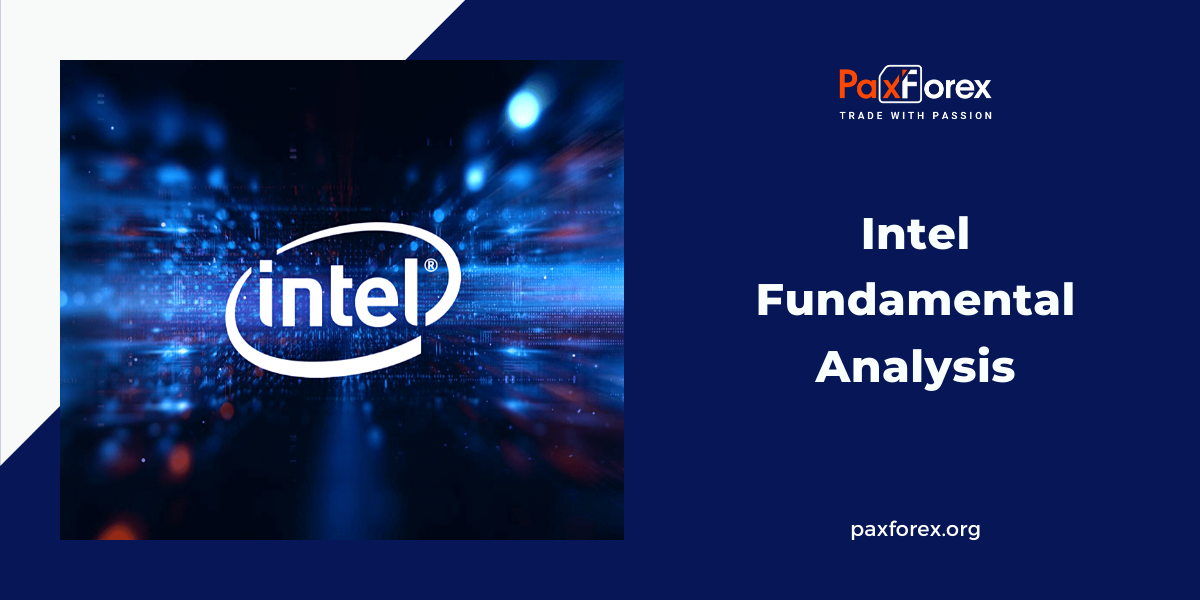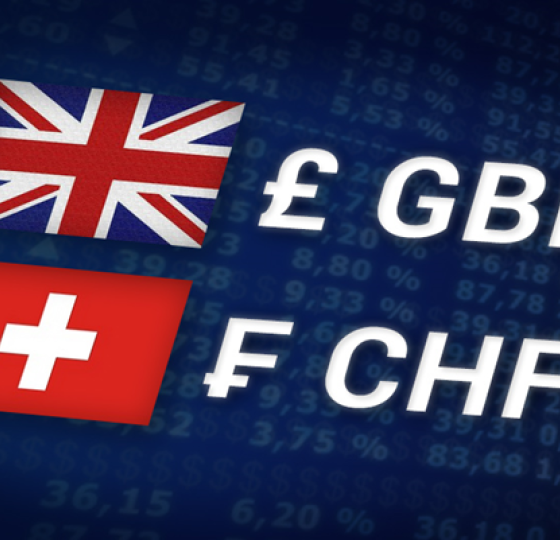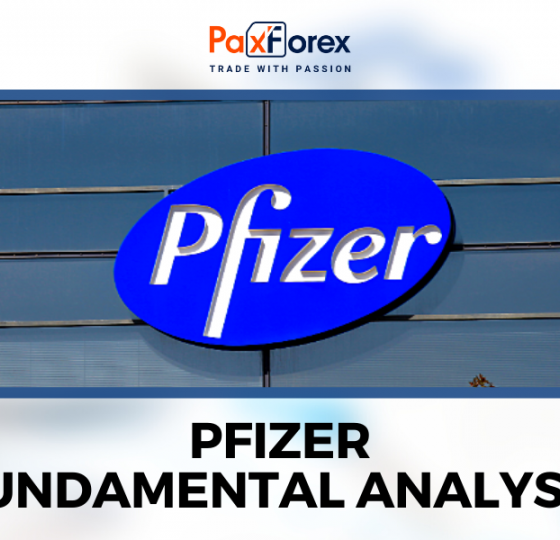
Source: PaxForex Premium Analytics Portal, Fundamental Insight
Intel's recent 25% surge in stock price can be attributed to positive analyst comments and a rally in technology stocks. This marks a significant turnaround from the company's dismal start to the year. Bernstein analyst Stacy Rasgon upgraded Intel from a "sell" to a "hold" rating, indicating limited downside potential as the company is expected to achieve Wall Street's reduced earnings forecast. Rasgon believes that Intel's fundamentals have already bottomed out, and the delayed launch of new chips could further benefit the company. However, Intel's current stock price of around $33 a share may have surpassed Rasgon's target of $30. With Intel trading at just 17 times trailing earnings and expected to make a major comeback in 2024, the question remains whether the company can sustain its stock market success.
Intel's struggles have been attributed to a decline in the PC market and a loss of market share to Advanced Micro Devices. Intel's first-quarter 2023 guidance projects a 37% decline in revenue at the midpoint of its guidance range, compared to the previous year's top line of $18.4 billion. The company also anticipates an adjusted loss of $0.15 per share, a substantial decrease from the year-ago period's earnings of $0.87 per share. Although the PC market is expected to hit bottom soon, market research firm IDC predicts a 10.7% decline in PC sales this year to 260.8 million units. This forecast is less optimistic than the firm's earlier projection of a 6.5% decrease to 281 million units.
A research firm, IDC, has predicted a rebound in the PC market in 2024, with 2023 being a year of inventory clearance. This means that Intel's client computing group, responsible for 50% of the company's revenue in 2022, may not see a bottom any time soon. This group includes sales of processors used in desktops, notebooks, and workstation PCs. The rival chipmaker, AMD, has been gaining market share from Intel in the PC processor space, with an estimated 44.4% share of the desktop processor market in Q1 2023, up from 41.4% in the same period last year. AMD has also gained ground in the laptop CPU space with an estimated 23.6% share in Q1 2023, an increase of 40 basis points from the prior year.
However, the server processor market is not expected to provide much relief for Intel in 2023. Analysts forecast that AMD's share of server processors could increase from 15.6% in 2022 to 20.5% by the end of 2023. In contrast, Intel's share is expected to shrink from 77% in 2022 to 70.9% in 2023. To counter the market share losses against AMD, Intel is relying on its latest 4th-generation Sapphire Rapids server processors. These processors have received over 450 design wins and have been selected for deployment by more than 50 original equipment manufacturers and original design manufacturers. Intel expects healthy demand for its latest server processors throughout the year.
AMD's latest 4th-gen Epyc server processors, manufactured using a 5-nanometer (nm) process, outperform Intel's Sapphire Rapids processors, built on a 10nm node, in terms of power and efficiency, according to independent tests. Although Intel's Sapphire Rapids processors were initially designed to compete with AMD's 3rd-gen Epyc server processors, the development delay puts Intel at a disadvantage, forcing it to compete with the latest chips from AMD. As a result, it remains to be seen whether Intel's Sapphire Rapids processors can prevent AMD from gaining more market share in server processors.
Industry analysts predict a challenging year ahead for Intel, with revenue expected to decrease by 19% to $50.8 billion in 2023, and adjusted earnings projected to drop from $1.84 per share last year to $0.53 per share. However, they anticipate a significant improvement in 2024, contingent on the PC market's recovery and Intel's chips being competitive enough to rival AMD. Investors considering purchasing Intel stock after its recent gains should wait for tangible signs of a turnaround, especially given its expensive forward price-to-earnings (P/E) ratio of 69. Therefore, prudent investors may want to avoid this semiconductor stock since the company is currently unable to justify the high multiple at which it is trading, and the odds are stacked against it.
As long as the price is above 31.00, follow the recommendations below:
- Time frame: D1
- Recommendation: long position
- Entry point: 32.72
- Take Profit 1: 33.80
- Take Profit 2: 36.00
Alternative scenario:
If the level of 31.00 is broken-down, follow the recommendations below:
- Time frame: D1
- Recommendation: short position
- Entry point: 31.00
- Take Profit 1: 30.00
- Take Profit 2: 28.00













